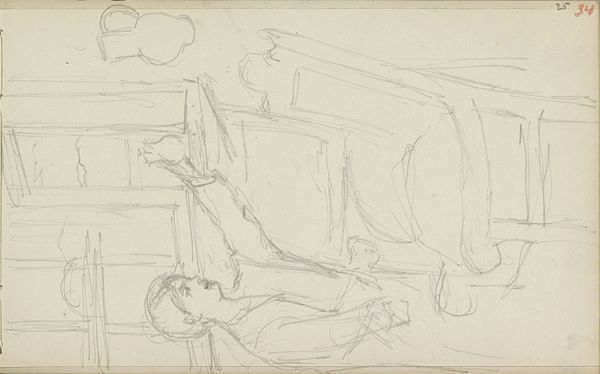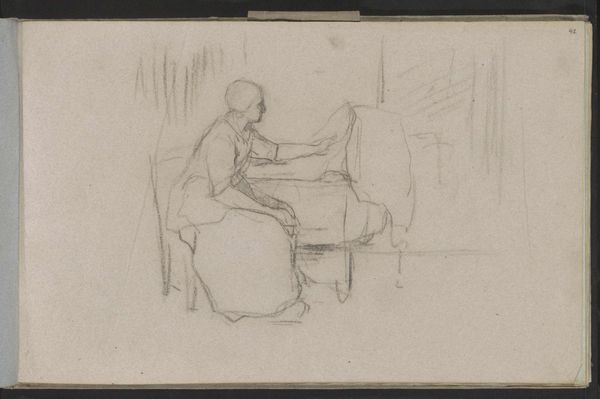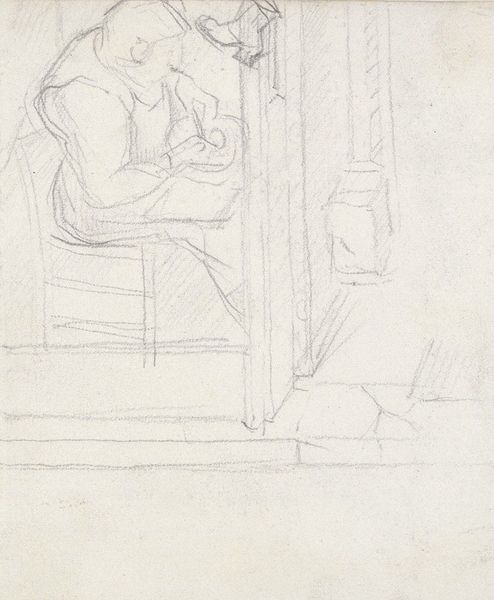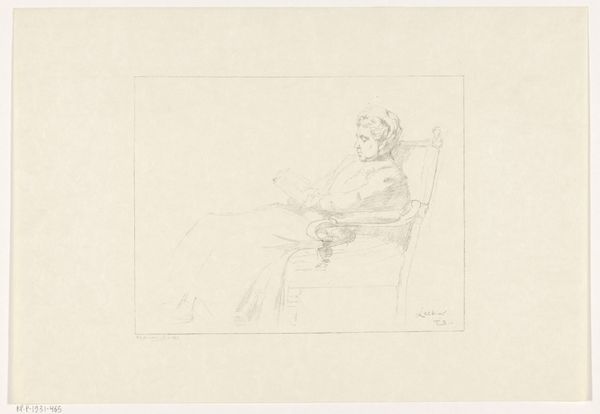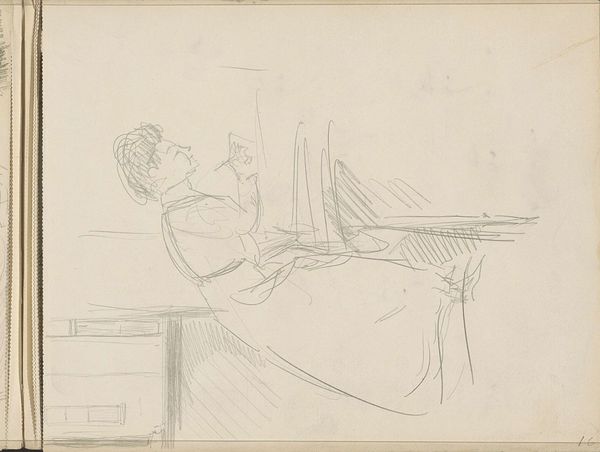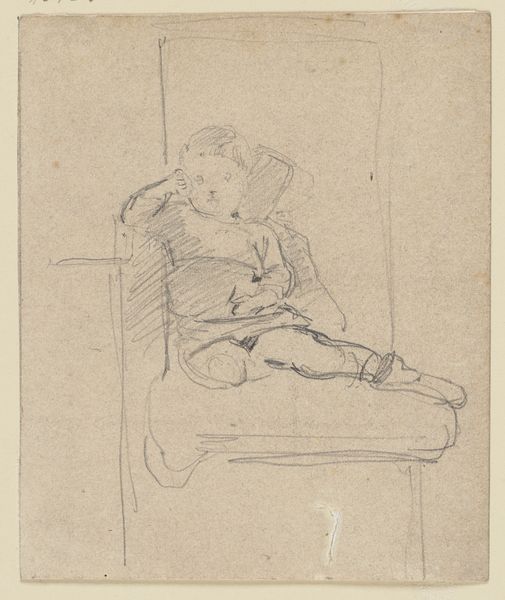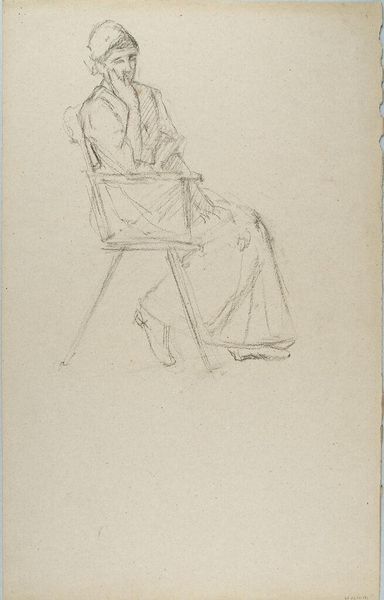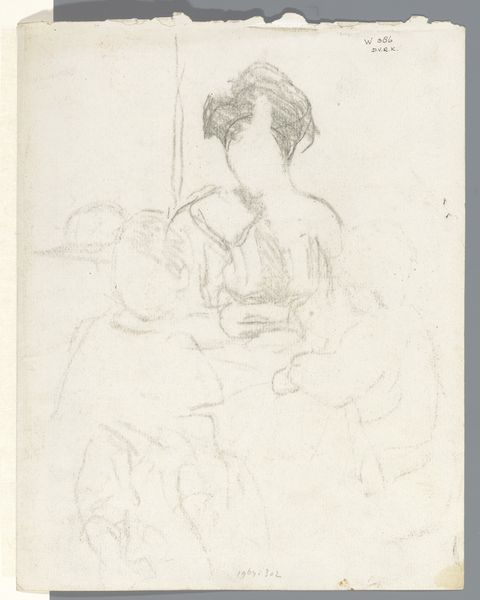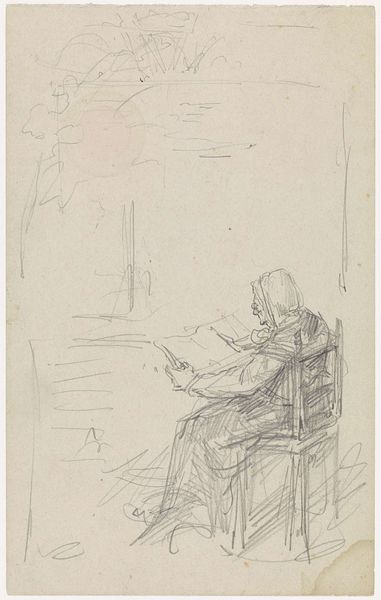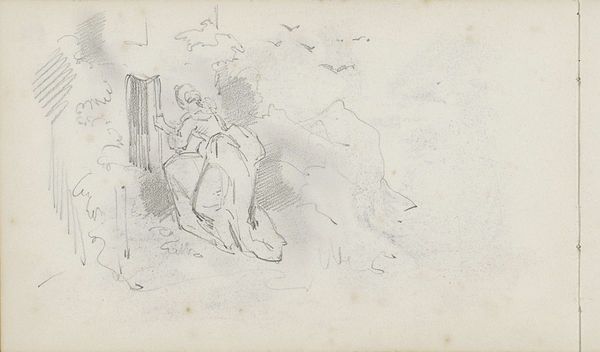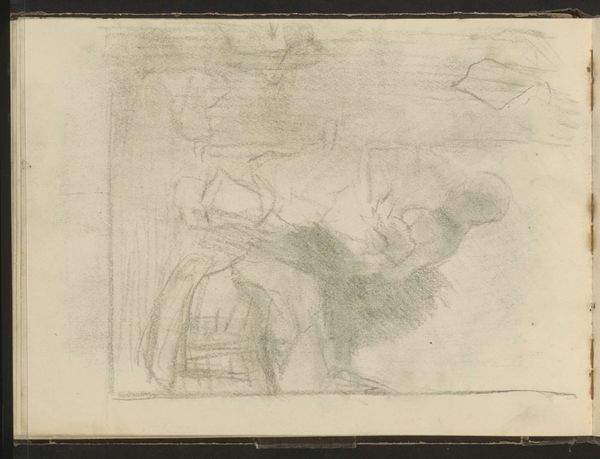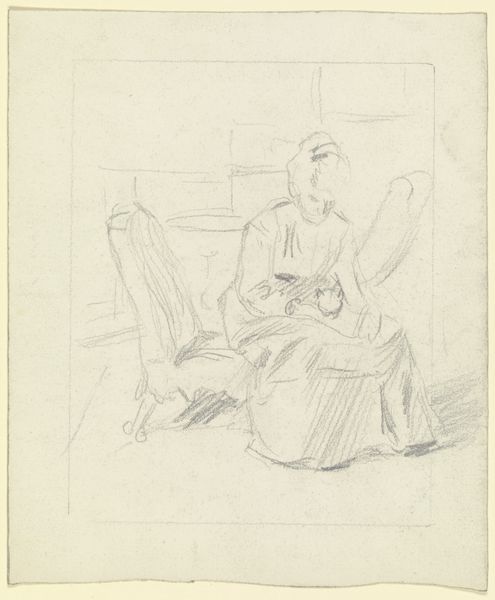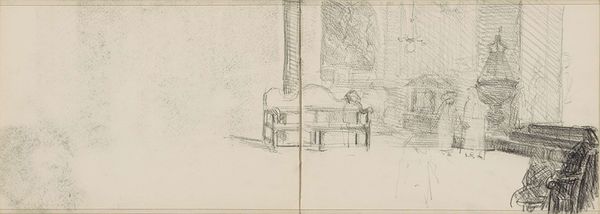
drawing, pencil
#
portrait
#
drawing
#
pencil sketch
#
figuration
#
pencil
#
pencil work
Dimensions: height 95 mm, width 170 mm
Copyright: Rijks Museum: Open Domain
Editor: This is "Sketch of a Spinning Woman" by Pieter Barbiers, created sometime between 1782 and 1837. It’s a pencil drawing. It feels incredibly fragile, almost like a fleeting thought captured on paper. What strikes you most about this work? Curator: The immediate fragility you noted is key, but let's delve deeper. This sketch offers us a glimpse into the everyday life of a woman, likely of the working class, engaged in labor. We have to ask: who was this woman? What was her story beyond this quiet moment of domesticity? How does the sketch aesthetic itself comment on labor and visibility? Editor: I hadn't thought about the woman’s identity. The sketch makes her seem anonymous, almost. Curator: Precisely! And anonymity can be a form of erasure. The art historical canon has often overlooked the labor and lives of women, particularly those from marginalized communities. Barbiers captures a moment in time, but that moment exists within a much larger framework of societal and economic inequalities. Does this initial perspective resonate with you? Editor: Definitely. The simplicity now makes me think about all the untold stories, all the unseen labor that built society at the time. It also makes me think about the male gaze—who gets to document, and whose perspective is valued? Curator: Excellent point! The act of sketching, who is doing it and who is being observed, always has a power dynamic. If Barbiers was sketching a working-class woman, was this for ethnographic purposes, aesthetic pleasure, or something else? How would this image differ if made by the woman herself? This drawing opens doors to so many relevant questions! Editor: I see this sketch in a completely new light now! I went from simply appreciating the style to understanding the many contextual and critical issues that it engages with. Thanks so much! Curator: And thank you for your sharp observations. It’s by questioning and contextualizing that we truly start to unpack these complex images!
Comments
No comments
Be the first to comment and join the conversation on the ultimate creative platform.
